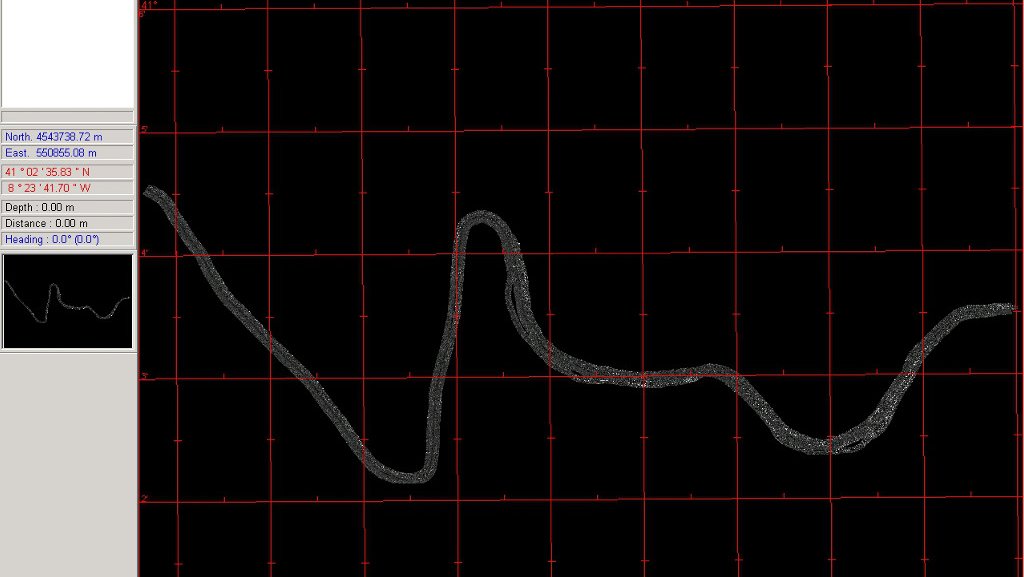Entre-os-Rios
Entre-os-Rios
The collapse of the Hintze Ribeiro bridge over the Douro River on 4 March 2001 led to the collapse of several vehicles that were circulating at the time of the incident.
For the search mission on the river, technical teams of the Navy were created in the areas of competence of the Hydrographic Institute (HI), the Maritime Authority and the Naval Command. The main function of the HI teams was the location of the submerged vehicles, mobilizing about two tons of which included waterborne sampling equipment with single beam and multibeam system, high frequency sonar and lateral sonar, ROV, magnetometer, acoustic current meter and DGPS.
The frequent adverse environmental conditions observed in the operating scenario, such as strong current, large amount of suspended matter, transported debris, accumulated metallic waste, water mixing areas and whirlpools temporarily limited the use of part of the equipment , such as lateral sonar, and made it impossible to use some of the results, notably the registers obtained by magnetometer surveys, where the anomaly calculated for the bus that had fallen would be lost on the value of the geologically affected local magnetic field by large masses of iron bars on the piers, the barges and the wreckage of the bridge.
In addition to the operation of the equipment, the teams dedicated themselves to the processing, crossing, analysis and comparison of the data that were obtained, in order to detect the contacts that could correspond to the injured vehicles, also allowing to determine the evolution of each one of these contacts in terms of sediment cover and detachment.
The information obtained led to the conclusion that the most suspicious contacts corresponded to rocky outcrop areas, which were relatively extensive near the bridge, with hundreds or thousands of sonar contacts similar to those found in the cars.
The analysis of conditions and decision on the order of contacts to be investigated depended on the nature of the contact, the feasibility of the dives carried out, the rigorous positioning of the poits with DGPS and the validation by divers, with lateral and lateral sonar with multibeam to better define some contacts. Despite the difficulties, the fulfillment of the rescue of all the injured vehicles and part of the bodies of the occupants, was much due to the human effort made by the teams of the HI in communion with the remarkable performance of all the national and international teams highlighted for this mission, the help made available by the population.
The mission was concluded on 20 June.









